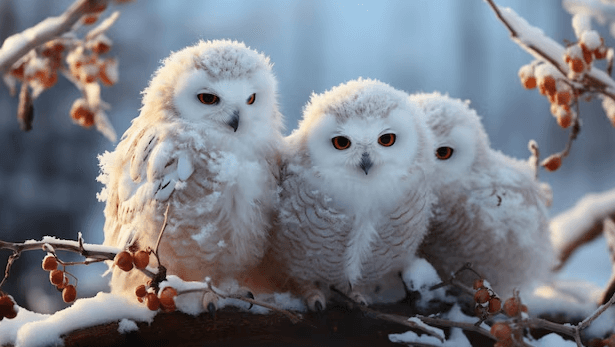Baby:4vgh1kdm9f0= Snowy Owl

The early life of the Baby:4vgh1kdm9f0= Snowy Owl presents a fascinating intersection of vulnerability and resilience. With their distinctive downy plumage and strikingly dark eyes, these chicks not only captivate observers but also embody the challenges inherent in their Arctic habitat. As they mature, their dietary preferences and the dynamics of parental care reveal critical insights into their adaptation strategies. Yet, the complexities of their growth and survival raise important questions about their future amidst changing environmental conditions. What factors will determine their success in such a demanding ecosystem?
Appearance of Baby Snowy Owls
The appearance of baby snowy owls, or owlets, distinctly sets them apart from their adult counterparts.
Their soft, downy feathers exhibit intricate feather patterns that often appear mottled in shades of white and gray.
Unlike the striking yellow eyes of adults, owlets possess dark brown eye color, contributing to their unique charm.
This juvenile appearance emphasizes their vulnerability and distinct developmental stage within the species.
Growth and Development Stages
Growth and development stages of baby snowy owls unfold in a series of remarkable transformations that reflect their adaptation to the harsh Arctic environment.
The hatching process initiates their journey, as fluffy chicks emerge, dependent on parental care.
As they progress, fledgling behavior becomes evident, characterized by increased mobility and exploration, ultimately preparing them for independence in their challenging habitat.
Diet and Feeding Habits
While the snowy owl’s diet is primarily composed of small mammals, particularly lemmings, their feeding habits are influenced by seasonal variations and prey availability.
Effective prey selection is vital, as these owls utilize diverse hunting techniques, including a silent approach and powerful talons.
This adaptability ensures they thrive in harsh conditions, highlighting their remarkable efficiency as predators in the Arctic ecosystem.
Read Also Clipart:_1zjcqxvo1g= Laughter
Parental Care and Challenges
How do snowy owls navigate the challenges of parental care in their harsh Arctic habitat?
Their nesting behaviors reflect adaptive strategies to combat environmental threats, such as climate change and habitat loss.
Incubating eggs and rearing chicks require significant energy, compelling these birds to balance foraging with protection.
Successful parenting hinges on resilience against these pressures, ensuring the survival of their young amid a rapidly changing ecosystem.
Conclusion
In conclusion, the early life stages of Baby:4vgh1kdm9f0= Snowy Owl reveal a delicate balance between vulnerability and resilience. As these chicks navigate their Arctic environment, they must rely on parental guidance and an adaptable diet to thrive. The journey from hatchling to fledgling is not merely a walk in the park; it is a rigorous process that underscores the challenges faced in the wild. Understanding these dynamics is crucial for appreciating the survival strategies of this captivating species.



